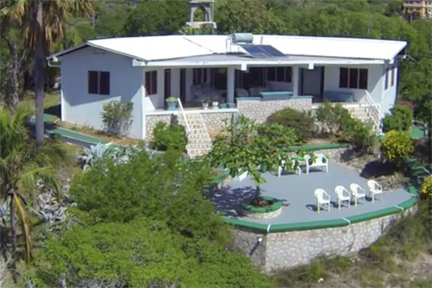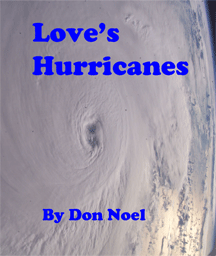Published in the Lowestoft Chronicle, June 1, 2022
To my astonishment, Dad welcomed the idea like an old friend. He’d heard a story, years ago, about someone doing the same thing.
“Jean Shepherd,” he  told the four of us. Greatest storyteller of my time.” Apparently on WOR, a New York radio station back in the 50s. “Never knew whether the stories were true or not,” he added.
told the four of us. Greatest storyteller of my time.” Apparently on WOR, a New York radio station back in the 50s. “Never knew whether the stories were true or not,” he added.
We would soon find out. We were on the public beach, before dawn. A few joggers ran on the wet sand just above a gentle surf, but it was otherwise deserted. Dad sat comfortably in a big aluminum lawn chair with four clusters of balloons tied to the arms and back corners.
What balloons! They were orbs the size of medicine balls, drab gray weather balloons designed to carry instruments up into storm clouds to send back data. The whole thing was my pal Jerry’s idea; his community college physics professor had helped him find the balloons. Later in the day, when they became hard to spot against gathering clouds, we would wish they were more colorful, but early in the morning we had no reason to anticipate that.
And we had no idea what the lift would be; the professor was offering Jerry extra credit to find out. How high off the ground could $120 worth of helium — two 12-pound tanks, thirty cubic feet, evenly distributed in balloons — lift a 200-pound man?
We’d aimed at four or five balloons at each corner, but the tanks gave out after only three. Just as well. “The professor says solar heating makes air expand, and helium too,” Jerry said, “so once the sun comes up there should be plenty of lift.” Just in case his optimism proved warranted, we’d bought 100 feet of clothesline, and had four 25-foot guy lines tied to the legs of the chair in order to keep Dad from getting away.
The sun edged over the horizon, bright in a blue sky. “How about a seat belt?” Dad said. For the first time, he sounded a bit nervous. “This contraption just may rock around, and I don’t want to be pitched out.” At his age, he added, “I could break a leg from six feet off the ground.”
Howie found a multi-colored silk scarf that his wife had left in the pickup, long enough to wrap around Dad’s hips and knot behind the chair. He protested, but then decided that being securely trussed into his lawn chair was a good idea.
The sun was well up by now. We’d unknowingly held him down while strapping him in; the moment we stepped back, the chair surged up six feet, over our heads. We each grabbed a guy line. Dad bobbed around a bit, but we soon had him stabilized and back down to maybe four feet off the ground.
“I think,” Dad said, sounding calmer than I would have, “I should have a sharp knife with me, to puncture a few balloons if need be.”
That proved the decisive moment: In unison, Jerry and Howie each said they had a sheath knife in the truck, and ran to get it. Bill and I still had the front lines, so the back of the chair surged up dramatically. Dad would have fallen out had he not been strapped in with that silk scarf.
“Let go!” he shouted.
We did.
“No!” he said in the next breath. “I mean grab the other ropes too!”
Too late. He went up like an elevator, the guy lines whipping in the air. The other two guys came running back, but the ropes were well beyond our reach. Dad and his aeronautical lawn chair reached equilibrium with gravity maybe forty feet up.
“Make a note,” said Jerry, mindful of his extra credit. “Two 12-pound tanks of helium lift a 200-pound man 40 feet off the ground at . . .” — he checked his watch — “. . . 8 a.m., an hour after sunrise.” He looked up. “Now how do we get him down?”
The morning was still warming; Dad and the chair were drifting up again.
Howie proved the coolest: “Call him on his cell phone!”
I did. It rang for a while. We could see Dad fishing through the silk scarf to dig it out of his pocket. He finally answered, and I handed the phone to Howie.
“Mr. Armstrong,” he said, “try to reach down and untie those guy ropes. Pull them up into your lap and tie them together. Then we’ll have one long rope that will reach the ground.”
“OK,” Dad said. “I wish I had a knife.”
We could see him stowing the phone again, then reaching gingerly down for the ropes. He got the front two loose, but couldn’t reach the knots on the back legs. Finally he pulled up one of those back ropes, tied on both lengths from the front, and lowered away. Too late; he was now well past 75 feet up.
Just then an Eyewitness News van and a police cruiser appeared. One of the joggers had seen what was happening and called both the station and the police, sending photos when Dad was only 40 feet or so up.
“What’s going on?” asked the cop.
“Does he have a phone?” asked the reporter.
I let Jerry explain to the police; I started to dial Dad again on my phone.
“No, give me the number,” the reporter said. “I need to get him on a live line.” In a moment he was dialing, and we could see Dad squirming in the chair to get his phone out again. “What’s his name?” the reporter asked. I told him.
“Mr. Armstrong,” he said into his phone, “hold on a moment.” He turned to face his cameraman. “This is Tom Dennis,” he intoned, “live, here on an Oyster Bay beach. A local man, Arnold Armstrong, is in the air above me in a lawn chair suspended by balloons. We’re going to pan up now to give you a look. I have Mr. Armstrong on the line. How are you doing, sir?”
“Doing just great, thank you.”
I knew my Dad: I could tell from his voice that a moment’s television fame had eradicated any fear.
“How’s the view?” Tom Dennis prompted.
“Great! I can see planes landing and taking off at LaGuardia. Maybe JFK too.”
“I expect so, sir. My producer back at the studio tells me pilots are being warned to stay clear of you. Am I imagining, or are you drifting north?”
“You’re right,” Dad said. “I’ll be out over the Sound in a few minutes.”
“And how will you come down, sir?”
“Damned if I know.”
I won’t belabor it; you can imagine what the rest of the day was like. Another TV station arrived with a drone camera, so they had terrific close-up pictures of Dad as he answered telephoned questions. He had a series of radio and TV interviews until almost noon, when he discovered that his phone had less than 20 percent power left. He declined any more broadcast stuff and turned it off, saving it for emergency use wherever and whenever he landed.
He was by now halfway across Long Island Sound. Prompted by police, a man had phoned to say he had a cabin cruiser, and volunteered to ferry us and track Dad’s progress. Several TV crews had boats, too.
Dad crossed the Connecticut shore in mid-afternoon. Thanks to the Long Island police, a Connecticut state trooper met us to continuing trailing Dad, along with a fleet of TV vans.
Meantime, Amazon had reached us, offering to deliver Dad a hamburger and milk shake by their still-experimental package delivery drone. With his phone turned off, I couldn’t reach him to explain. Lest he panic and think he was under attack, I turned that idea down. Besides, it occurred to me, the less he ate and drank while in the air, far from any men’s room, the better he would be.
Thickening clouds as he drifted into Connecticut made it harder to see him, but also cooled the helium, so he started coming down. He lucked into a soft landing in the Hackensack High football stadium at about 5:45; a squad of troopers promptly punctured the balloons so he wouldn’t be dragged.
With equally remarkable collaboration, a gaggle of television teams arranged a mass live interview, the lawn chair behind him, a forest of microphones in front, that led the 6 p.m. news on every broadcast and cable station.
“Mr. Armstrong,” one of the reporters asked, “could you ever have imagined a day like the one you’ve had?”
“Oh, sure,” said Dad. “Heard a story just like mine six decades ago on radio. Earl Shepherd, on WOR. One of the great raconteurs of that era.
“I’d thought maybe Shep made it up,” he added, “but I guess it was real after all.”
–End–





